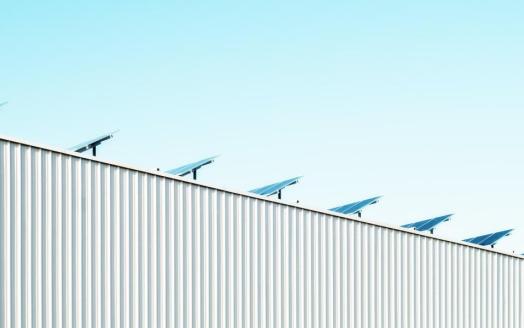Articles and Interviews
Latest Articles
Advanced Filter

1 February 2024
Article
Embracing a dual GH2 strategy: domestic use and trade
International trade in green hydrogen (GH2) is shaping up to be an attractive endeavour that redraws global energy supply patterns – as such, GH2 producers are pondering strategies for market engagement. The global effort to decarbonize hard-to-abate industries relies on the involvement of developing countries with abundant renewable resources, while industrialized countries remain the demand centres for hydrogen imports. IRENA projects global GH2 production to reach approximately 492 million metric tonnes by 2050, of which around 25% is expected to be traded internationally. But opportunities for GH2-producing countries of the global South go beyond the benefits of direct export.Trade opportunities and barriersExporting GH2 and Power-to-X (PtX) derivatives can fuel economic development. The projected interregional trade of GH2 is projected to reach USD 280 billion in 2050, with over half of its revenues estimated to be generated in developing countries.2 By participating in international energy markets, countries can attract foreign investment exceeding the amount required for local decarbonization efforts. This can lead to a cascade of economic benefits, including increased foreign exchange earnings, tax revenues and local economic activity. However, tax exemptions granted to investors (who are typically permitted to operate in special economic zones) curtail the host country’s tax revenues.Exports can not only enhance the trade balance but also empower countries within the global energy framework, increasing autonomy and political significance3. International GH2 trade may also facilitate knowledge transfer, accelerating socioeconomic development in exporting countries. Most potential export countries will depend heavily on imports of industrial equipment, which may considerably reduce net export revenues. Nonetheless, the overall expansion of technological capabilities enhances domestic research, development, and innovation.4Despite ambitious goals, the growth of the international GH2 market has been slow so far, with less than 100 kilotonnes of electrolysis-produced hydrogen in 2022 – far below the projected 2050 demand.5 International transport – especially maritime – of GH2 faces technological and regulatory uncertainties, significantly raising landed costs for the 45% of trade volume that likely won’t be able to rely on pipelines.6 The uncertainty in the scale and dynamics of GH2 trade, coupled with considerations of self-sufficiency and blue hydrogen as a transitional technology in industrialized economies, poses challenges to prospective GH2 exporters.Strategic state of playRealizing the pivotal role they can play in the emerging GH2 market, many developing countries have enshrined trade objectives in their national hydrogen strategies. In most cases, these strategies declare a country’s intent to export, import or achieve self-sufficiency, shaping their global market role and collaboration aspirations. Some governments identify specific regions for promoting trade partnerships between prospective importers and exporters as part of their GH2 strategy. International cooperation will be crucial to laying the groundwork for GH2 trade and local benefits through knowledge exchange, technology transfer, collaboration in hydrogen technology R&D, as well as international standard-setting. The figure below displays the current global hydrogen partnership network.Visualization of the global hydrogen partnership networkSource: Analysis based on data from the World Energy Council Germany (2023), World Energy Council (2022, p.7), and own research. Green shades refer to (slightly and strongly) export-oriented countries, blue shades to (slightly/strongly) import-oriented countries, while light red colour indicates a neutral or rather self-sufficient position of countries.Some countries prioritize exports, foreign direct investment (FDI), and the implementation of large-scale hydrogen projects in their national hydrogen strategies. Due to the absence of developed hydrogen transport infrastructure, however, countries more often prioritize the development of their domestic markets before entering global hydrogen trade. They adopt a gradual and sequenced approach to GH2 production and use, starting with small- to medium-scale projects on both the supply and demand sides. Certain nations identify “no-regret” applications that are easily adaptable to GH2, such as ammonia production or methanol for feedstock and synthetic fuels.This vision for GH2 as a catalyst for low-carbon industrial development is increasingly reflected in national hydrogen strategies. This underscores the potential for new sustainable industries employing GH2 locally, such as green steel or fertilizer production. Green intermediates f(e.g. direct reduced iron) , or green goods (e.g. green steel or fertilizer), can provide cheap and sustainable alternatives for international buyers, while accumulating more added value domestically than could be achieved through direct GH2 export. Competitive clean energy prices may even exert a “renewables pull effect”, enticing hard-to-abate industries to set up shop in GH2 producer countries.7 Additionally, some nations aim for a competitive edge and leadership role in upstream hydrogen technologies, including electrolysers and fuel cells.The dual approachThe dual approach to hydrogen utilization seeks to maximize the domestic benefits of producer countries by engaging in both direct export and local use. As with any other natural resource, a strategy based on export is easier than one that seeks to add value at the national level as it is a quick win with immediate impact on GDP, without the complexity of altering the industry structure. In the short term, then, a purely export-oriented strategy may be more profitable, but it forgoes the longer-term benefits of building domestic skills and shifting away from an old, inflexible industry structure. A dual approach, in which only surplus GH2 is exported, is therefore more beneficial overall.Domestic value creation, industrial linkages, technological learning and permanent employment are more likely to be achieved when GH2 is produced for local uses (i.e. for decarbonizing the domestic economy and promoting green industrialization). The more value addition is realized domestically (e.g. by using GH2 to produce green steel or fertilizer, see next figure), the more long-lasting the economic benefits that producer countries can reap. The ease with which this can be achieved, however, depends on the existing industrial structure. If downstream GH2-ready industries are not yet in place, changing the industrial structure to include them will be a complex endeavour, taking years to accomplish. Nonetheless, the benefits are significant: an increased share of manufacturing contribution to GDP, skills development and long-term employment, as well as a more adaptable and flexible industry structure, bolstered by green diversification and the renewables pull effect.The Green Hydrogen Value ChainConclusionInstead of relying exclusively on GH2 exports, which entail high technological and systemic uncertainties, countries should consider pursuing a dual GH2 trade strategy. This involves the establishment of a domestic hydrogen market to decarbonize existing industries, and exporting any surplus to overseas markets. While more complex than simply exporting GH2 – especially for those within pipeline range of high-demand markets – a local value chain offers extensive long-term benefits. Governments can start by attracting investment in energy-intensive steel or base chemicals, gradually moving into downstream industries that use green steel or chemical feedstock, and upstream into industries that produce renewable power generators and electrolysers. This long-term vision calls for a careful alignment of the country’s energy, infrastructure, trade and industrial strategies. Source: The article was published on the IAP UNIDO website.

1 October 2023
Article
Strategies for hydrogen transport infrastructure
What are the challenges for hydrogen storage and transportation network infrastructure?Source: The article was published on the UNIDO IAP website: Strategies for hydrogen transport infrastructure | Industrial Analytics Platform Hydrogen will need to be transported over varying distances, from points of production to intermediaries and end-users. Today, there is a high co-location of production and demand for GH2 in hydrogen clusters/valleys, which means that GH2 is mostly produced using on-site electrolysers in areas with favourable conditions for producing renewable energy.1 In the future, however, economies of scale and improved safety standards may make it profitable and safe to produce hydrogen in large installations and then distribute it more broadly to different users.2 In addition, by 2050, 3% of the global final energy demand is expected to be traded as hydrogen.3 As both production volumes and transport distances expand to meet increasing global demand, significantly more hydrogen infrastructure will be required to connect GH2 production with demand centres and international markets.The challengeCentralized production of GH2 for domestic use or export requires a hydrogen storage and transportation network infrastructure, including pipelines, ports and terminals, conversion plants and large-scale storage facilities. This infrastructure will be crucial for realizing the potential that GH2 holds for decarbonization (global North) and development (global South). An estimated 55% of cross-border hydrogen transport will be via pipelines4, as they can deliver a continuous flow of gaseous hydrogen (or its derivatives) at relatively high efficiency, while shipping will be used for more flexible distribution over extended distances.5 The necessary infrastructure is, however, almost non-existent at present. Technical challengesTransportation and large-scale conversion/reconversion of hydrogen is currently a complex endeavour, threatening the large-scale adoption and competitiveness of GH2. For example, while hydrogen has two-and-a-half times the energy density of natural gas, it is also three times lighter under equivalent conditions, necessitating higher pressures or volumes in supply. This makes it challenging to repurpose existing infrastructure. Moreover, hydrogen’s considerably lower boiling point (at -253°C compared to -162°C for natural gas) complicates transportation. For shipping, hydrogen must first be converted into denser forms using energy-intense processes, such as liquefaction, or it must be transformed into substances like ammonia or synthetic hydrocarbon fuels.6To construct the relevant transport infrastructure, an estimated spending of USD 200 billion is required by 2030.7 As only about 10% of currently proposed hydrogen investments focus on infrastructure, an investment gap of about 85% exists.Because transportation costs constitute a significant portion of the overall hydrogen costs8, planning, international cooperation and investment mobilization are urgently needed.Government planningDue to the significant lead-times and costs of infrastructure construction, governments need to plan their hydrogen transport networks carefully and integrate them in the wider industrial and energy strategies. Identifying transport routes, solutions and corridors in GH2 road maps will help attract funding by allowing investors to evaluate future market prospects.9Governments, businesses and investors may also consider no-regret options in hydrogen transport infrastructure. Termed “no-regret” due to their likelihood of avoiding resource wastage, these options are generally characterized by adaptability and low risk. These choices remain beneficial and relevant despite uncertain developments in the hydrogen industry, ensuring valuable investments regardless of market shifts.10A no-regret vision also needs to reduce the risk of oversizing the future hydrogen network will most likely be smaller than the current natural gas network – by focusing on indispensable demand. Policymakers can identify robust no-regret corridors for early hydrogen transport based on industrial demand, with industrial clusters presenting some of the clearest opportunities.11 Demand in other sectors, such as heating and road transport, is much less certain due to efficient electrification possibilities. Thus, anchoring infrastructure on industrial hydrogen demand is a risk-minimizing strategy that mitigates the risks of oversizing, asset stranding or project abandonment.12Pipeline (re)constructionOnce “no-regret” areas for hydrogen transport are identified, the conversion of the gas grid to hydrogen can be initiated.13 Repurposing part of the existing fossil fuel pipeline network to transport hydrogen can provide new infrastructure while reducing the stranding of obsolete installations in a relatively quick and cost-effective way.14 It offers an advantageous financing case since required CAPEX investments are 65–94% lower than for new, purpose-built hydrogen pipelines15, although the expected lifetime of a repurposed pipeline will likely be shorter than a new one. Another consideration, given the technical obstacles presented by a 100% hydrogen grid, is that synthetic methane can often be transported in unmodified pipelines.16Nevertheless, constructing dedicated infrastructure will be inevitable to link emerging demand and supply areas. Installing new purpose-built hydrogen pipelines parallel to old gas pipelines can result in costs savings and shorter timelines by leveraging the established right-of-way, siting permits and existing laid groundwork.17Hydrogen carriers for shippingSeaborne transportation will enable flexible long-distance hydrogen trade, using three main carriers (see figure below): liquefied hydrogen (LH2), ammonia (NH3), and Liquid Organic Hydrogen Carriers (LOHC). As the market grows, all carriers are expected to see significant cost reductions, particularly LOHC.18 Selecting the best carrier depends on operational factors and costs: LH2 is suitable for high-purity hydrogen when on-site reconversion isn’t feasible, ammonia is cost-effective for small-scale multimodal transport when some infrastructure already exists, while LOHC offers safety and cost-reduction potential. The choice should be tailored to specific supply routes, considering individual circumstances.19 Energy available along the conversion and transport chain in hydrogen equivalent terms, 2030Source: IEA (2022). Global Hydrogen Review 2022. Note: The final use will influence the choice of shipping option, as energy losses vary between the different hydrogen carriers. Note: LH2 = liquefied hydrogen; NH3 = ammonia; LOHC = liquid organic hydrogen carrier. Numbers show the remaining energy content of hydrogen along the supply chain relative to a starting value of 100, assuming that all energy needs of the steps would be covered by the hydrogen or hydrogen-derived fuel. The Haber-Bosch synthesis process includes energy consumption in the air separation unit. Boil-off losses from shipping are based on a distance of 8 000 km. For LH2, dashed areas represent energy being recovered by using the boil-off gases as shipping fuel, corresponding to the upper range numbers. For NH3 and LOHC, the dashed area represents the energy requirements for one-way shipping, which are included in the lower range numbers.The ultimate dominance of a specific technology depends on factors such as market uptake speed, potential for cost reduction, and the ability to provide a safe and user-friendly solution. This entails significant uncertainty for the future path of long-distance GH2 distribution and trade because infrastructure such as terminals and converters are different for each associated carrier, incurring a risk of technological lock-in and stranded assets.Conclusion International coordination will be imperative, as it was for propelling the global liquid natural gas (LNG) market, to provide a clear path forward and prevent delays in infrastructure roll-out, which would hamper GH2 adoption and climate mitigation. Smart planning, clear regulation and meaningful support are therefore all required to mobilize investment in GH2 infrastructure for low-carbon growth in the global South, and decarbonization in the North. This opinion piece is a snapshot of the GH2 policy toolkit for developing countries being developed by UNIDO, IRENA and IDOS.Jan Sievernich is Project Associate with the Climate and Technology Partnership Division (CTP) of the United Nations Industrial Development Organization (UNIDO).Smeeta Fokeer is Industrial Development Officer at the Climate and Technology Partnership Division (CTP) of the United Nations Industrial Development Organization (UNIDO).Disclaimer: The views expressed in this article are those of the authors based on their experience and on prior research and do not necessarily reflect the views of UNIDO (read more). IEA (2022) Global Hydrogen Review 2022. OECD (2022) Innovation and Industrial Policies for Green Hydrogen. IRENA (2022), Global hydrogen trade to meet the 1.5°C climate goal: Part II – Technology review of hydrogen carriers, International Renewable Energy Agency, Abu Dhabi. IRENA (2022), Global hydrogen trade to meet the 1.5°C climate goal: Part II – Technology review of hydrogen carriers, International Renewable Energy Agency, Abu Dhabi. IEA (2022). Global Hydrogen Review 2022. IRENA (2022), Global hydrogen trade to meet the 1.5°C climate goal: Part II – Technology review of hydrogen carriers, International Renewable Energy Agency, Abu Dhabi. Hydrogen Council (2022). Hydrogen Insights 2022. Roland Berger (2021). Hydrogen transportation – The key to unlocking the clean hydrogen economy. IRENA (2022), Global hydrogen trade to meet the 1.5°C climate goal: Part I – Trade outlook for 2050 and way forward, International Renewable Energy Agency, Abu Dhabi. Agora Energiewende and AFRY Management Consulting (2021). No-regret hydrogen: Charting early steps for H₂ infrastructure in Europe. Agora Energiewende and AFRY Management Consulting (2021). No-regret hydrogen: Charting early steps for H₂ infrastructure in Europe. IRENA (2022), Global hydrogen trade to meet the 1.5°C climate goal: Part I – Trade outlook for 2050 and way forward, International Renewable Energy Agency, Abu Dhabi. Agora Energiewende and AFRY Management Consulting (2021). No-regret hydrogen: Charting early steps for H₂ infrastructure in Europe. Agora Energiewende and AFRY Management Consulting (2021). No-regret hydrogen: Charting early steps for H₂ infrastructure in Europe. IRENA (2022), Global hydrogen trade to meet the 1.5°C climate goal: Part II – Technology review of hydrogen carriers, International Renewable Energy Agency, Abu Dhabi. IEA (2022). Global Hydrogen Review 2022. IEA (2022). Global Hydrogen Review 2022. Roland Berger (2021). Hydrogen transportation – The key to unlocking the clean hydrogen economy. Roland Berger (2021). Hydrogen transportation – The key to unlocking the clean hydrogen economy. Image: Nathan Jennings via Unsplash

1 August 2023
Article
Mobilizing investment in green hydrogen
Public policy can be a key driver of green hydrogen (GH2) investment.Source: Mobilizing investment in green hydrogen | Industrial Analytics PlatformDespite its enormous decarbonization potential and recent international efforts, the green hydrogen (GH2) sector is still in the take-off phase, with only about 10 GW in total electrolyser capacity expected to be installed globally in 20231 (see figures below). Most GH2 projects under construction, or in the pre-commercial phase with limited electrolyser capacity—typically less than 50 MW.2 There is also limited market demand for GH2. Due to its high production costs, GH2 cannot yet economically compete with grey hydrogen (produced with fossil fuels), especially in the hard-to-abate steel and cement sectors.3 The absence of a market generates a vicious circle. Low demand deters investment, constraining the GH2 value chain’s efforts to achieve economies of scale, which means prices fail to reach a competitive level. The next figure showcases this price gap, and forecasts how the levelized cost of hydrogen may change for various energy sources between 2019 and 2050.To achieve a breakeven of prices between grey and green hydrogen, an estimated investment gap of about 50 billion US$ needs to be bridged.4 The absence of bankable off-take propositions further contributes to the perception of GH2 projects as risky, and the industry struggles to attract substantial investments. Another major impediment to GH2 investment is the lack of clear, comprehensive regulatory frameworks. This gridlock between investors, developers, policymakers and off-takers must be resolved to kick-start the GH2 value chain.To break this vicious cycle, governments need to address regulatory uncertainty and compensate for the current cost gap, thereby creating a conducive market climate for a GH2 investment take-off. Market & regulatory conditionsLong-term government strategies (e.g. national hydrogen road maps) and concrete commitments regarding GH2’s role in the energy transition can help to create investment security.5 They build the confidence of all stakeholders that there will be a future market for GH2 and related technologies.Permitting for renewable energy generation is a fundamental bottleneck for GH2 adoption, as complex and time-consuming processes can hinder the construction of necessary GH2 facilities and infrastructure.6 Governments can address this issue by streamlining and accelerating these procedures on local and national levels, while ensuring the relevant authorities have the required capacities to process permits for renewable energy and GH2 production sites in a timely manner. Closing the cost gapGreen public procurement is an established policy option to help scale up the value chain through public sector investment.7 Governments can act as a stable initial driver of the demand for final or intermediate green goods produced with GH2. This may particularly promote the creation of a green steel and cement market, as these materials are heavily used in buildings, bridges, railways and other public infrastructure projects.8 In addition to buying directly, governments can offer financial incentives (e.g. subsidies, price premiums or tax rebates) to other end users for the purchase of goods produced with GH2.Acquiring funding for GH2 projects is a particular challenge in developing countries. Foreign investors often take a cautious approach, driven by risk factors such as policy uncertainty, economic instability and low credit ratings. Governments can help to instil investor confidence by offering sovereign guarantees, shifting the risk burden to the public sector if primary obligors default on payments.9 These guarantees can also cover risks that are under government control, such as contractual deviations and tax treatment alterations10. Uncertain prospects in the market for GH2 bring substantial financial risk for the guarantor; any guarantee should therefore be preceded by a thorough assessment of the specific business case. Alternatively, development banks or other donors could step in to act as guarantors for private loans. The Ministry of Finance of a prospective producer country may also issue a “letter of support" document to the project stakeholders, providing enough commitment to comfort them while avoiding the legal robustness of a formal guarantee.11The more regulatory clarity and longevity a state can provide, the more transparent and efficient the interactions between its institutions and private businesses will be – which in turn attracts (foreign) investment. Value chain integration & ecosystem developmentRead the guidelinesA value chain approach is vital for successful interdependent GH2 projects. Public initiatives can create GH2 industrial clusters in optimal geographical locations, concentrating on mobility and industry, with national or international infrastructure support. Identifying suitable cluster development locations, where multiple end users share production and transport, reduces associated costs and risks.12 Government authorities can facilitate consortia of multiple companies along the GH2 value chain, devising solutions for early cluster development.The current absence of an established GH2 financing ecosystem means that projects rely heavily on public funding, often lacking awareness of available alternatives. At the same time, prospective GH2 investors face multiple financing streams with bureaucratic barriers. Establishing centralized digital public matchmaking platforms can reduce this burden and streamline the allocation process.13Until GH2 finance mechanisms and business plans mature, projects like commercial-scale GH2 export and import infrastructure could benefit from public–private partnerships involving direct public investment and multi-stage competitions for contract awards. A modular approach, starting by funding smaller projects to reassure financiers, is an effective way to mitigate risk.14Underlying all of these efforts, governments need to harmonize international standards and eliminate unnecessary regulatory barriers to trade. This is especially important for GH2 transportation, which requires clear regulations for tariffs, safety standards and double taxation. Additionally, a globally agreed definition of GH2 and a standard certification regime will ensure the market recognizes its “green” value.15 Final remarksPublic policy holds a pivotal role in facilitating the large-scale investments that are essential for launching the GH2 economy. They can foster market creation, alleviate regulatory hurdles and shape an ecosystem conducive to private and institutional investments along the entire GH2 value chain. Establishing long-term signals to boost investor confidence, incentivizing investment by reducing risks, stimulating domestic commercial demand for GH2, and harmonizing standards are key strategies to overcome challenges and ensure the successful transition to a GH2-driven future. While global coordination remains essential, it is incumbent on national governments to lead the way in creating a favourable domestic market and investment conditions for the GH2 economy.This opinion piece is a snapshot of the GH2 policy toolkit for developing countries being developed by UNIDO, IRENA and IDOS.Smeeta Fokeer is Industrial Development Officer at the Climate and Technology Partnership Division (CTP) of the United Nations Industrial Development Organization (UNIDO).Jan Sievernich is Project Associate with the Climate and Technology Partnership Division (CTP) of the United Nations Industrial Development Organization (UNIDO).Disclaimer: The views expressed in this article are those of the authors based on their experience and on prior research and do not necessarily reflect the views of UNIDO (read more). For comparison, the coal power capacity of Germany alone stands at 37.5 GW. World Bank (2022). Blended finance can catalyze renewable energy investments in low-income countries. https://blogs.worldbank.org/ppps/blended-finance-can-catalyze-renewable-energy-investments-low-income-countries KPMG (2022). The hydrogen trajectory. Hydrogen Council (2021). Hydrogen Insights Report 2021. European Investment Bank (2021). Unlocking the hydrogen economy — stimulating investment across the hydrogen value chain. Investor perspectives on risks, challenges and the role of the public sector. IEA (2019). The Future of Hydrogen: Seizing today’s opportunities. Report prepared by the IEA for the G20, Japan. Blaker, A. (2021) Financing the Clean Hydrogen Revolution. Hydrogen Council. IRENA (2022), Green hydrogen for industry: A guide to policy making, International Renewable Energy Agency, Abu Dhabi. IRENA (2020), Renewable energy finance: Sovereign guarantees (Renewable Energy Finance Brief 01, January 2020), International Renewable Energy Agency, Abu Dhabi. Griffiths et al. (2021). Industrial decarbonization via hydrogen: A critical and systematic review of developments, socio-technical systems and policy options. IRENA (2020), Renewable energy finance: Sovereign guarantees (Renewable Energy Finance Brief 01, January 2020), International Renewable Energy Agency, Abu Dhabi. UNIDO (2023) Green Hydrogen Industrial Cluster Guidelines. IRENA (2022), Green hydrogen for industry: A guide to policy making, International Renewable Energy Agency, Abu Dhabi. IEA (2019). The Future of Hydrogen: Seizing today’s opportunities. Report prepared by the IEA for the G20, Japan. World Bank (2022). Green Hydrogen: A key investment for the energy transition. (Image: Nicholas Doherty via Unsplash)

7 November 2022
Article
Green Hydrogen: The energy opportunity for decarbonization and developing countries
Hydrogen is one of the most abundant elements on Earth, and it represents to us a unique opportunity for a clean energy transition. The past years show clearly just how close to a climate catastrophe we are living. Climate change is an existential threat to a sustainable future. Facing up to the climate challenge is an opportunity to promote prosperity and a brighter future for all.Green hydrogen (GH2) and its derivatives will play a vital role in that transition. Hydrogen is classified as “green” – a clean and renewable energy carrier – when it is produced through electrolysis powered by renewable energy.GH2 is a game changer for the hard-to-abate sectors such as steel, cement and the chemical industry, which cannot readily be electrified. It is currently the only way we have to decarbonize these sectors.GH2 is versatile as it can be used as a combustion fuel or as feedstock for industrial processes. It can also be converted back into electricity in a fuel cell. Compared to grid renewable electricity, it can be more easily stored and transported over long distances for use further from the initial renewable energy source.Because GH2 electrolysis does not need to be near geographically concentrated or hard-to-extract resources, it can be key in establishing energy security.Derivatives of GH2, such as green ammonia and green methanol, are long-term energy carriers. They store surplus renewable electricity produced during periods of low demand. Just like GH2, its derivatives can be used as industrial energy source, be used as green feedstock, or used as green transportation fuel.Green Hydrogen is a game changer for the hard-to-abate sectors such as steel, cement and the chemical industry, which cannot readily be electrified.Green hydrogen needs green energy: the transition needs a huge increase in renewable energy generation.Green ammonia is synthetically manufactured by combining nitrogen with hydrogen using renewable energy sources. Green ammonia can be applied in sustainable fertilizer production, thereby contributing to decarbonizing the food value chain, while supporting agricultural productivity and food security.We still have our work cut out for us in making the energy transition a reality. No mature GH2 market exists yet. It is, however, encouraging that the number of countries with national hydrogen roadmaps has tripled over the last year. This shows that many countries are readying themselves to start using GH2 and planning how best to benefit from the economic opportunities it will provide.At UNIDO, we are putting together development programmes to help developing countries achieve this goal and realize the opportunities for sustainable industrialization that follow.

1 November 2022
Article
Achieving a Green Hydrogen transition built on equity and consensus
The emerging green hydrogen (GH2) economy promises to generate prosperity and accelerate decarbonization, but at what cost for producing countries’ populations and the environment? The GH2 transition carries several implications for energy, water and food supply security, and its potential impacts on land use, ecosystems and biodiversity cannot be ignored, either.The challenge of energy justice in the GH2 transition is thus to minimize the negative externalities while ensuring that its resultant benefits are shared by all. Going forward, a sound and participative approach to the development of GH2 strategies can act as a catalyst for energy justice. GH2 has been identified as a potential energy vector to decarbonize the transport and manufacturing sectors and to achieve the global greenhouse gas reduction targets set out in the UNFCCC Paris Agreement of 2015.Aside from its economic and climate benefits, the proliferation of GH2 also entails numerous social and environmental challenges.

2 July 2022
Article
Industrial and innovation policy can speed up the Green Hydrogen transition
Green hydrogen (GH2) as a means to decarbonize industry is now well-ingrained in the policy discourse. Around 45 countries are devising or have published hydrogen strategies, and several agreements have been concluded between countries to set up tomorrow’s trade routes for hydrogen. Despite these efforts, we are still far from a world where GH2 plays a key role as a source of energy, given that demand for GH2 is limited and the infrastructure for GH2 is confined to industrial areas. Moreover, global electrolyser capacity amounts to just a few hundred megawatts, which lies significantly below the target of 115 GW by 2030 to meet the GH2 demands for all the published and announced strategies, and again far below the forecasted target of 5 TW by 2050, according to IRENA’s World Energy Transitions Outlook.Spanish version of the article: La política industrial y de innovación puede acelerar la transición al hidrógeno verde | Industrial Analytics Platform

2 February 2022
Article
Green Hydrogen: Fuelling industrial development for a clean and sustainable future
Green hydrogen is a key element in any decarbonization strategy. All major and emerging economies are investing heavily in green hydrogen, as well as in international energy partnerships to secure long-term imports. This creates new opportunities for industrial development, particularly in countries that are well-endowed with renewable power sources. If these countries create the appropriate framework conditions, they can develop promising new industrial clusters by investing in renewable power projects and electrolysers first to then gradually attract energy-intensive steel or base chemicals investments, in addition to manifold downstream industries that use green steel or chemical feedstocks. Proactive strategies are therefore indispensable to fully reap these new opportunities for industrial development.


